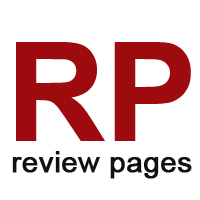Review Pages: Methods, tools and best practices to increase the capacity of urban systems to adapt to natural and man-made changes 3 (2017)
Abstract
Starting from the relationship between urban planning and mobility management, TeMA has gradually expanded the view of the covered topics, always remaining in the groove of rigorous scientific in-depth analysis. During the last two years a particular attention has been paid on the Smart Cities theme and on the different meanings that come with it. The last section of the journal is formed by the Review Pages. They have different aims: to inform on the problems, trends and evolutionary processes; to investigate on the paths by highlighting the advanced relationships among apparently distant disciplinary fields; to explore the interaction’s areas, experiences and potential applications; to underline interactions, disciplinary developments but also, if present, defeats and setbacks. Inside the journal the Review Pages have the task of stimulating as much as possible the circulation of ideas and the discovery of new points of view. For this reason the section is founded on a series of basic’s references, required for the identification of new and more advanced interactions. These references are the research, the planning acts, the actions and the applications, analysed and investigated both for their ability to give a systematic response to questions concerning the urban and territorial planning, and for their attention to aspects such as the environmental sustainability and the innovation in the practices. For this purpose the Review Pages are formed by five sections (Web Resources; Books; Laws; Urban Practices; News and Events), each of which examines a specific aspect of the broader information storage of interest for TeMA.Downloads
References
Ahern, J. (2011). From fail-safe to safe-to-fail: Sustainability and resilience in the new urban world. Landscape and urban Planning, 100(4), 341-343. doi: https://doi.org/10.1016/j.landurbplan.2011.02.021
Arafah, Y., & Winarso, H. (2017). Redefining smart city concept with resilience approach. IOP Conf. Ser.: Earth Environ. Sci., 70(012065). IOP Publishing. doi:http://dx.doi.org/10.1088/1755-1315/70/1/012065
Bahadur, A., Tanner, T., & Pichon, F. (2016). Enhancing Urban Climate Change Resilience. Seven Entry Points for Action. Available at https://www.adb.org/sites/default/files/publication/213291/sdwp-047.pdf
Baptista, P., Melo, S., & Rolim, C. (2014). Energy, environmental and mobility impacts of car-sharing systems. Empirical results from Lisbon, Portugal. Procedia-Social and Behavioral Sciences, 111, 28-37. doi: https://doi.org/10.1016/j.sbspro.2014.01.035
Barresi, A., & Pultrone, G. (2013). European strategies for smarter cities. Tema. Journal of Land Use, Mobility and Environment, 6(1), 61-72. doi:http://dx.doi.org/10.6092/1970-9870/1455
City of Athens (2017). Redefining the city Athens Resilience Strategy for 2030. Available at http://www.100resilientcities.org/wp-content/uploads/2017/06/Athens_Resilience_Strategy_-_Reduced_PDF.compressed.pdf
Cohen, B., & Kietzmann, J. (2014). Ride on! Mobility business models for the sharing economy. Organization & Environment, 27(3), 279-296. doi: https://doi.org/10.1177/1086026614546199
Dhar, A., Patel, D., Raina, R., and Sandrone, P. (2017) What US consumers think of shared mobility. Available at: https://www.mckinsey.com/industries/automotive-and-assembly/our-insights/what-us-consumers-think-of-shared-mobility
Feigon, S., Murphy, C., & Center, S. U. M. (2016). Shared mobility and the transformation of public transit. TCRP Report, 188. doi: http://dx.doi.org/10.17226/23578
Hudec, O. (2017). Cities of Resilience: Integrated Adaptive Planning. Quality Innovation Prosperity, 21(1), 106-118. doi:http://dx.doi.org/10.12776/qip.v21i1.776
Innovation Network for Communities (2017). Essential Capacities for Urban Climate Adaptation. A Framework for Cities. Rockefeller Foundation. Available at http://www.in4c.net/files/City-Adaptation-Essential-Capacities-March2017.pdf
Kim, Y., Eisenberg, D. A., Bondank, E. N., Chester, M. V., Mascaro, G., & Underwood, B. S. (2017). Fail-safe and safe-to-fail adaptation: decision-making for urban flooding under climate change. Climatic Change, 1-16. doi: https://doi.org/10.1007/s10584-017-2090-1
Massa, P., & Campagna, M. (2014). Social Media Geographic Information: Recent Findings and Opportunities for Smart Spatial Planning. Tema. Journal of Land Use, Mobility and Environment, 0. doi: http://dx.doi.org/10.6092/1970-9870/2500
McKinsey (2012). Mobility of the future. Opportunities for automotive OEMs. Available at: https://www.mckinsey.com/~/media/mckinsey/dotcom/client_service/automotive%20and%20assembly/pdfs/mobility_of_the_future_brochure
Morelli, V. G., Weijnen, M., Van Bueren, E., Wenzler, I., De Reuver, M., & Salvati, L. (2013). Towards intelligently-sustainable cities. TeMA Journal of Land Use, Mobility and Environment, 6 (1), 73-86. doi:http://dx.doi.org/10.6092/1970-9870/1496
Papa, R., Galderisi, A., Vigo Majello, M., & Saretta, E. (2015). Smart and Resilient Cities. A Systemic Approach for Developing Cross-sectoral Strategies in the Face of Climate Change. TeMA. Journal of Land Use, Mobility and Environment, 8(1), 19-49. doi:http://dx.doi.org/10.6092/1970-9870/2883
Shaheen, S. A. (2016). Mobility and the sharing economy. Transport Policy, 51, 141-142. doi: https://doi.org/10.1016/j.tranpol.2016.01.008
Shaheen, S., & Chan, N. (2015). Mobility and the sharing economy: Impacts synopsis. Available at: http://tsrc. berkeley. edu/sites/default/files/Innovative-Mobility-Industry-Outlook_SM-Spring-2015.pdf
Staricco, L. (2013). Smart Mobility: opportunità e condizioni. Tema. Journal of Land Use, Mobility and Environment, 6(3), 342-354. doi: http://dx.doi.org/10.6092/1970-9870/1933
SUMC - Shared-Use Mobility Center (2016). Los Angeles County Shared Mobility Action Plan. Available at: http://sharedusemobilitycenter.org/wp-content/uploads/2016/09/SUMC-Single-Page-Web-2.pdf
SUMC - Shared-Use Mobility Center (2017). Twin Cities Shared Mobility Action Plan. Available at: http://sharedusemobilitycenter.org/wp-content/uploads/2017/10/SUMC_TWINCITIES_Web_Final.pdf
United Nations (2014). World Urbanization Prospects: The 2014 Revision. United Nations, New York. ST/ESA/SER.A/366. Available at http://esa.un.org/unpd/wup/Publications/Files/WUP2014- Report.pdf
Resilient Cities (2017). Available at: http://www.100resilientcities.org/about-us/

Copyright (c) 2017 Tema. Journal of Land Use, Mobility and Environment

This work is licensed under a Creative Commons Attribution 4.0 International License.
Authors who publish in this journal agree to the following:
1. Authors retain the rights to their work and give in to the journal the right of first publication of the work simultaneously licensed under a Creative Commons License - Attribution that allows others to share the work indicating the authorship and the initial publication in this journal.
2. Authors can adhere to other agreements of non-exclusive license for the distribution of the published version of the work (ex. To deposit it in an institutional repository or to publish it in a monography), provided to indicate that the document was first published in this journal.
3. Authors can distribute their work online (ex. In institutional repositories or in their website) prior to and during the submission process, as it can lead to productive exchanges and it can increase the quotations of the published work (See The Effect of Open Access)
